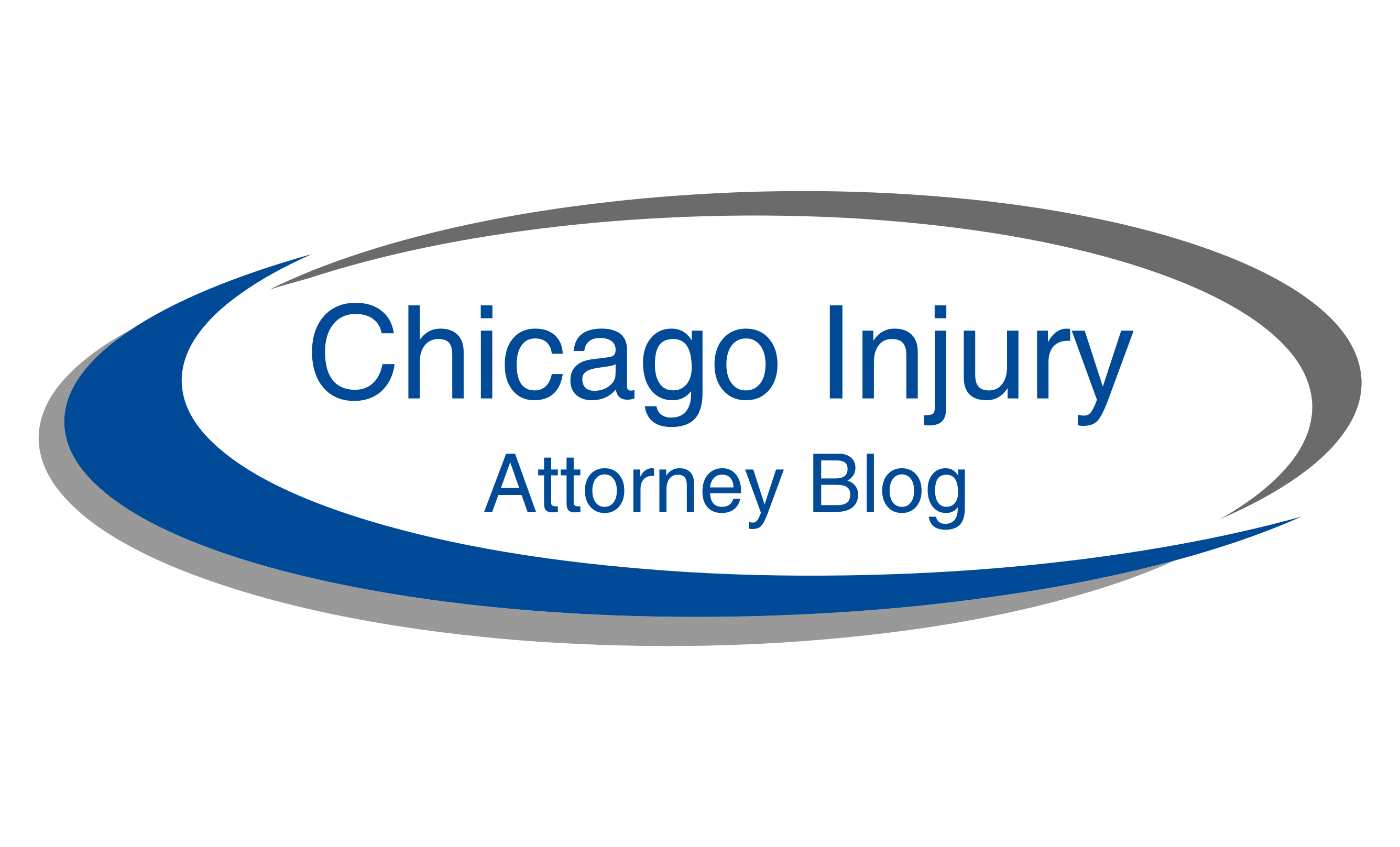Vehophobia, defined as an intense fear of driving, can have a significant impact on an individual’s daily life and overall mental well-being.
For many individuals, this phobia may arise from traumatic experiences, heightened anxiety, or underlying mental health conditions. It is essential to recognize the signs and symptoms associated with vehophobia for those affected.
This article provides an in-depth exploration of the definition of vehophobia, its potential causes, and effective strategies for overcoming this condition. Additionally, it addresses the legal implications, particularly for victims of personal injury cases in Chicago and the surrounding areas.
A comprehensive understanding of vehophobia is crucial for anyone seeking relief and support in managing this fear.
Understanding Vehophobia
Understanding vehophobia, a specific phobia characterized by an excessive fear of driving, is essential for individuals residing in urban areas such as Chicago, Rockford, and Champaign, particularly those who may be experiencing anxiety disorders as a result of traumatic experiences, such as motor vehicle accidents.
Victims of personal injury frequently face not only physical injuries but also significant emotional distress that can adversely affect their daily lives, relationships, and overall mental health.
This complex psychological condition, often associated with symptoms of post-traumatic stress disorder (PTSD), may result in panic attacks while driving and a complete avoidance of driving, highlighting the necessity for comprehensive treatment options and support from qualified mental health professionals.
What is Vehophobia?
Vehophobia, commonly recognized as driving phobia, is a specific form of anxiety characterized by an intense and irrational fear of driving or being in a vehicle. This condition may lead to symptoms akin to panic attacks, which can significantly impair an individual’s capacity to commute or participate in social activities.
Defining Vehophobia
Vehophobia is characterized as an intense fear of driving and falls within the category of anxiety disorders. Individuals affected by this condition may experience severe panic attacks or significant emotional distress at the mere thought of operating a vehicle.
This particular phobia often originates from traumatic experiences, such as being involved in a motor vehicle accident, which can leave enduring psychological effects. For those suffering from vehophobia, the prospect of driving can elicit debilitating symptoms, including an accelerated heartbeat, excessive sweating, and a profound sense of dread.
It is crucial to recognize that this condition is not merely a dislike of driving; rather, it is a legitimate psychological disorder that can impede daily activities and affect both professional obligations and personal responsibilities. Individuals grappling with this fear may find it challenging to commute to work, run errands, or engage in social activities, thereby underscoring the broader implications of untreated anxiety disorders.
Explaining the Fear of Driving
The fear of driving can originate from various sources, including past traumatic experiences, such as involvement in near-fatal accidents. This fear may manifest as panic attacks and emotional distress, significantly impeding individuals’ ability to restore confidence in their driving skills.
Such early encounters often leave profound emotional scars, resulting in a persistent sense of anxiety that can overshadow even the most straightforward aspects of road travel. For many, the very idea of getting behind the wheel elicits feelings of helplessness, reinforcing a cycle of avoidance. This emotional turmoil not only obstructs daily activities but can also lead to social isolation, adversely affecting interpersonal interactions and overall lifestyle.
Understanding the psychological roots of driving anxiety, commonly referred to as vehophobia, is essential for developing effective rehabilitation strategies. These strategies enable individuals to confront their fears incrementally and regain their autonomy on the road.
Causes of Vehophobia
The causes of vehophobia are multifaceted, often involving a complex interplay of various factors. These may include past traumatic experiences, particularly those associated with motor vehicle accidents, as well as underlying psychological disorders that contribute to increased anxiety and panic attacks when confronted with the prospect of driving.
Past Traumatic Experience
Past traumatic experiences, particularly those involving near-death accidents, significantly contribute to the development of vehophobia. Such incidents can result in enduring emotional distress and a heightened fear response when confronted with similar circumstances, leading to avoidance behaviors.
For example, an individual who has survived a severe collision may experience paralysis due to the memory of the crash, accompanied by an overwhelming sense of dread when near any vehicle. This emotional trauma can manifest in various ways, often affecting their daily life and interpersonal relationships.
Rehabilitation is essential in these cases, as effective treatment options such as cognitive-behavioral therapy can assist individuals in confronting and processing their fears. By addressing the psychological impact of the initial trauma, those affected by vehophobia can begin to regain their confidence, gradually re-engaging with the realm of transportation and fostering a healthier relationship with travel.
Anxiety and Stress
Anxiety and stress are significant contributors to vehophobia, a condition where individuals may experience symptoms such as increased heart rates, muscle tension, and panic attacks. This leads to a persistent cycle of emotional distress that can further entrench their fear of driving.
These emotional responses can result in avoidance behaviors, including steering clear of vehicles or specific driving situations, thereby exacerbating the fear. The interplay between anxiety and stress creates a feedback loop; as a person becomes increasingly anxious about driving, the associated stress intensifies, rendering the prospect of getting behind the wheel increasingly daunting.
To address these challenges, treatment options such as cognitive behavioral therapy provide effective strategies for reframing negative thoughts and reducing anxiety. Additionally, support groups offer vital community and shared experiences, fostering resilience and understanding among individuals facing similar struggles.
Underlying Mental Health Conditions
Underlying mental health conditions, such as post-traumatic stress disorder (PTSD) and other anxiety disorders, frequently exacerbate vehophobia by inducing a heightened state of emotional distress that may trigger panic attacks at the mere thought of driving.
Individuals facing these challenges often find themselves entrapped in a cycle of fear and avoidance, which further complicates their daily activities. Many report experiencing intrusive thoughts and excessive worry, which can inhibit their ability to drive.
To address these difficulties effectively, treatment options such as exposure therapy and cognitive behavioral therapy (CBT) have demonstrated efficacy.
Exposure therapy involves the gradual introduction of driving situations in a controlled environment, aimed at reducing anxiety over time. In parallel, CBT emphasizes the restructuring of distorted thinking patterns, fostering healthier responses to triggers.
Collectively, these therapeutic approaches can provide a pathway to overcoming the emotional distress associated with vehophobia and help individuals reclaim the freedom that this condition previously restricted.
Signs and Symptoms of Vehophobia
Recognizing the signs and symptoms of vehophobia is crucial for individuals experiencing this specific phobia. The condition may present through various physical symptoms, including elevated heart rate, muscle tension, and panic attacks.
Additionally, emotional symptoms may arise, indicating substantial distress when driving or contemplating the act of driving.
Physical Symptoms
Physical symptoms of vehophobia may include a rapid heartbeat, difficulty breathing, and other manifestations associated with panic attacks. These symptoms can arise when individuals are confronted with the prospect of driving or even contemplating getting behind the wheel.
Such symptoms underscore the profound emotional response associated with this fear and illustrate how the body’s anxiety mechanisms become activated. Individuals may experience heightened fear that results in muscle tension throughout their bodies, creating physical discomfort while in a vehicle.
This physiological response can initiate a vicious cycle; as anxiety intensifies, so do the physical manifestations, often leaving individuals feeling trapped in a situation beyond their control. Therefore, the interplay between mental distress and somatic symptoms effectively highlights the considerable challenges that vehophobia presents.
Emotional Symptoms
Emotional symptoms of vehophobia typically present as intense fear, anxiety, and emotional distress, prompting individuals to avoid situations that necessitate driving. This avoidance behavior can significantly impact their daily lives and participation in social events.
Such emotional turmoil often creates a cycle of avoidance, wherein the fear of driving leads individuals to decline invitations or miss gatherings, thereby straining personal relationships. The trauma associated with previous driving incidents or a general fear of losing control can exacerbate feelings of isolation, making it difficult to engage socially or pursue opportunities that involve travel.
Friends and family members may experience feelings of helplessness or frustration, which can further complicate the individual’s sense of shame or inadequacy. This anxiety not only disrupts their routines but also undermines their confidence in social contexts.
Behavioral Symptoms
Behavioral symptoms of vehophobia are characterized by a complete avoidance of driving, which may manifest as a refusal to participate in social events, missed appointments, and a reliance on others for transportation. This pattern can further exacerbate feelings of anxiety and isolation.
Such avoidance not only impairs personal freedom but also contributes to emotional distress, as individuals may feel constrained by their fears. The inability to drive can disrupt daily routines, leading to frustration and a diminished sense of self-worth.
Ultimately, this situation may require rehabilitation strategies to address the underlying anxieties and facilitate a more fulfilling life. Intervention programs that emphasize gradual exposure to driving can assist those affected in regaining their confidence. By confronting their fears, individuals may identify pathways to break free from the cycle of avoidance and reclaim their independence.
How to Overcome Vehophobia
Overcoming vehophobia requires a comprehensive approach that encompasses various treatment options, including cognitive behavioral therapy, exposure therapy, and personalized support from mental health professionals.
This structured methodology enables individuals to confront and manage their fear of driving effectively.
Seeking Professional Help
Seeking professional assistance is a critical step in overcoming vehophobia, as mental health treatment offers essential tools and support to navigate the complexities of this specific phobia through therapy and support groups.
For individuals dealing with this fear, it is imperative to understand the various treatment options available. Therapists commonly utilize cognitive-behavioral techniques to address the emotional distress associated with vehophobia, enabling clients to confront and reframe their fears within a safe environment.
Along with individual therapy sessions, support groups provide a sense of community and shared understanding, facilitating an environment where individuals can articulate their feelings and experiences.
With appropriate guidance, those affected by vehophobia can gradually enhance their confidence, ultimately liberating themselves from the constraints this fear imposes on their daily lives.
Gradual Exposure Therapy
Gradual exposure therapy is a well-established technique for addressing vehophobia, whereby individuals are methodically and progressively exposed to driving scenarios. This process enables them to confront their fears within a controlled environment while acquiring effective coping strategies.
This therapeutic approach commences with less intimidating situations, facilitating confidence-building over time. For example, individuals may begin by sitting in a stationary vehicle or visualizing themselves driving before advancing to brief drives in familiar locations.
Through repeated exposure to these scenarios at a manageable pace, individuals not only desensitize themselves to their fears but also cultivate practical coping mechanisms, drawing on principles from cognitive behavioral therapy. When integrated into a comprehensive treatment plan that encompasses various therapeutic options, this method can significantly enhance self-efficacy and facilitate more confident driving experiences.
Relaxation Techniques
Incorporating relaxation techniques into a treatment plan for vehophobia can assist individuals in managing anxiety levels and alleviating panic attack symptoms, thereby facilitating a more comfortable experience while driving or anticipating driving.
Practices such as deep breathing exercises serve as effective tools, enabling individuals to center their thoughts and regain control over their physiological responses. Furthermore, mindfulness practices promote a state of awareness that can significantly reduce emotional distress, fostering a sense of calm in the face of anxiety triggers.
These approaches not only provide immediate relief but also contribute to the development of long-term coping mechanisms. Given the costs associated with traditional therapy, integrating these relaxation techniques may present a more accessible and cost-effective pathway, give the power toing individuals to take charge of their journey toward overcoming vehophobia.
Legal Implications of Vehophobia
The legal implications of vehophobia are considerable, particularly in the realm of personal injury cases. Individuals may pursue financial compensation for emotional distress and other repercussions arising from their condition, which can, in certain instances, be classified as a disability.
Can Vehophobia be Considered a Disability?
The classification of vehophobia as a disability is a complex issue, often contingent upon the severity of the symptoms and their impact on an individual’s daily life, particularly when considering the costs associated with mental health treatment and therapy.
This classification not only affects access to essential support systems but also informs the legal parameters surrounding personal injury cases. In assessing emotional harm, it is crucial to consider the distress and anxiety experienced by individuals affected, as these can significantly hinder their ability to drive or even be a passenger in a vehicle.
Legal definitions of disability frequently include such debilitating conditions, thereby providing victims with potential pathways for financial compensation. This aspect emphasizes the importance of acknowledging psychological traumas in broader discussions of disability, as many individuals face substantial challenges in seeking justice and healing without appropriate recognition of their circumstances.
How Vehophobia can Affect Personal Injury Cases
Vehophobia can significantly impact personal injury cases, as victims may seek financial compensation for not only physical injuries but also emotional distress and the ongoing challenges associated with overcoming their fear of driving.
This fear can profoundly affect daily life, compelling individuals to avoid essential activities such as commuting to work or running errands. Legal practitioners often encounter the challenge of quantifying this intangible pain, as victims may require extensive therapy and rehabilitation services to regain their independence.
By presenting comprehensive medical records and expert testimonies, attorneys can effectively communicate the emotional toll of vehophobia to the court. This may encompass therapy costs as well as other related expenses that arise from the victim’s inability to drive, thereby ensuring that they receive fair compensation that accurately reflects their struggles.
Resources for Victims of Vehophobia
Numerous resources are available for individuals affected by vehophobia, including therapy, support groups, and various treatment options.
These resources provide comprehensive assistance aimed at helping individuals manage their fears and restore their confidence in driving.
Frequently Asked Questions
What is vehophobia?
Vehophobia is the persistent and excessive fear of driving or being a passenger in a vehicle. It is often associated with anxiety, panic attacks, and avoidance of any type of transportation.
What are the symptoms of vehophobia?
Symptoms of vehophobia can vary from person to person, but commonly include shortness of breath, rapid heartbeat, sweating, trembling, and a feeling of loss of control. It can also manifest as avoiding driving or riding in a vehicle altogether.
Can vehophobia be caused by a personal injury?
Yes, a personal injury can trigger vehophobia, especially if the injury was sustained in a vehicle accident. The fear may stem from the traumatic experience and can lead to long-term effects on the individual’s ability to drive or ride in a vehicle.
What are the long-term effects of vehophobia?
Untreated vehophobia can have severe consequences, including limitations in daily activities, social isolation, and impact on relationships. It can also lead to other mental health issues such as depression and anxiety.
How can a Chicago personal injury attorney help with vehophobia cases?
A Chicago personal injury attorney can assist individuals with vehophobia by providing legal guidance and support for their personal injury claim. They can also recommend resources for managing the fear and seeking proper treatment.
Are there resources available in Illinois for individuals with vehophobia?
Yes, there are resources available for individuals with vehophobia in Illinois, including support groups, therapy, and online resources. A Chicago personal injury attorney can also provide referrals to these resources for their clients.





